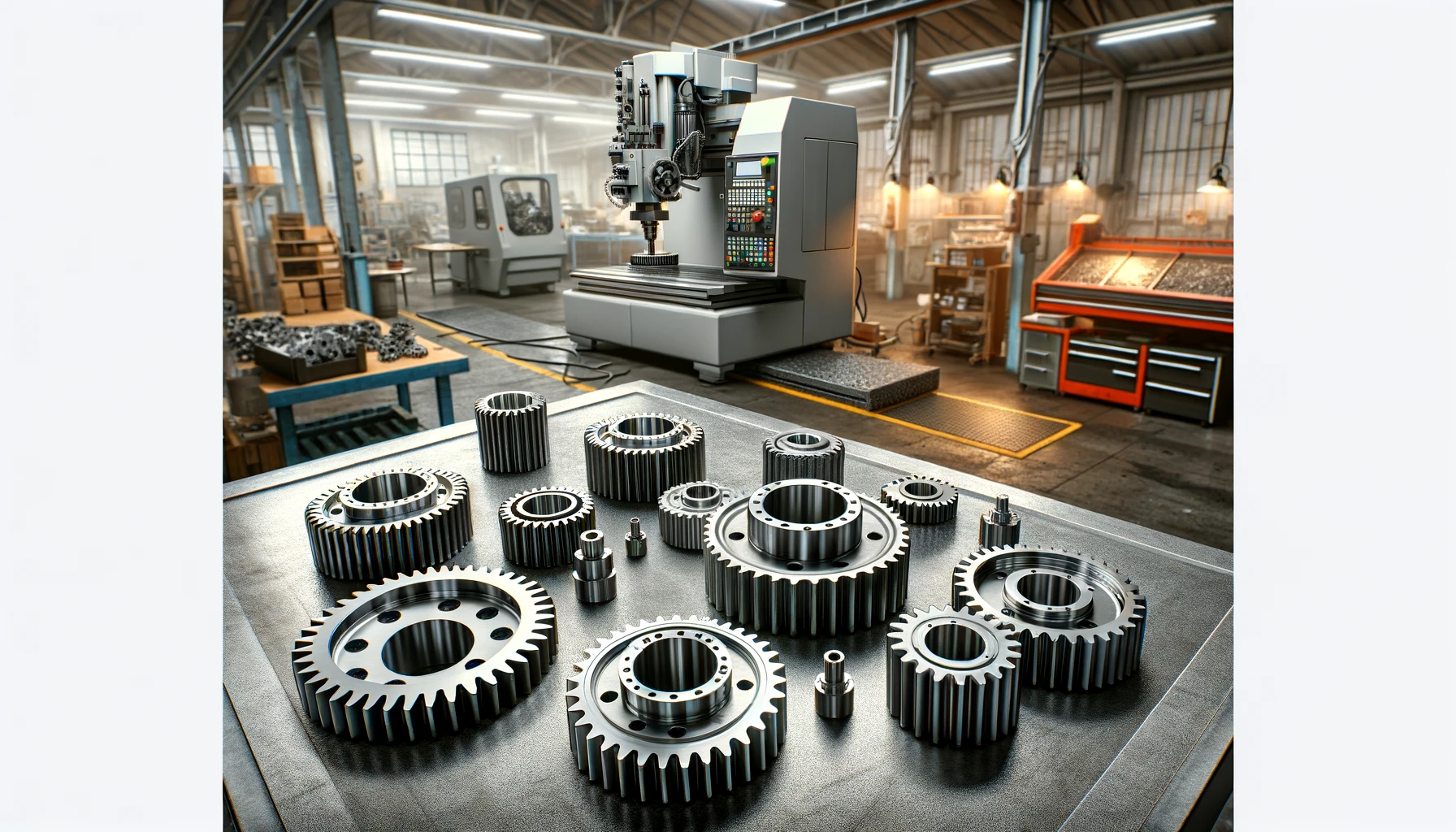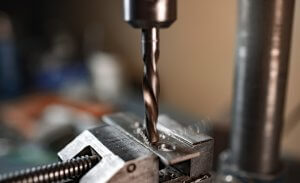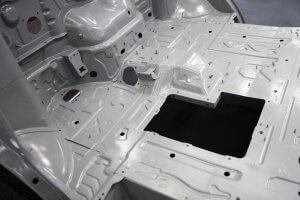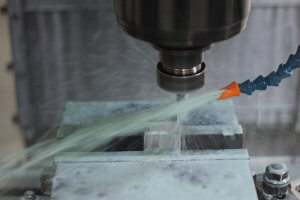What Materials Are Best Suited for CNC Machined Sprockets in Food Automation Systems?
Precision CNC Machining can improve the Durability and Performance of Sprockets in Food Automation Systems.When selecting materials for CNC machined sprockets that will be used in food automation systems, manufacturers must consider several critical factors. These include the material’s mechanical properties, compatibility with food products, and resistance to the environmental conditions of food processing areas, such as temperature fluctuations and exposure to cleaning chemicals.
Stainless Steel: Typically, 304 and 316 stainless steels are preferred for their corrosion resistance and food safety. The 316 stainless steel, in particular, offers higher corrosion resistance due to its increased molybdenum content, making it ideal for harsher environments.
Titanium: Known for its strength-to-weight ratio and excellent corrosion resistance, titanium is another excellent choice for high-performance sprockets in food automation systems. Its lightweight nature also reduces the overall load on machinery, leading to lower energy consumption.
High-Performance Plastics: Materials such as PEEK (Polyether ether ketone) are utilized where low weight and high chemical resistance are priorities. These plastics are also advantageous in environments where lubrication is restricted, providing self-lubricating properties.
Case Study: A beverage bottling facility recently transitioned to using 316 stainless steel sprockets. The switch resulted in a noticeable reduction in maintenance downtime, as the sprockets were less prone to corrosion caused by the acidic nature of the cleaning chemicals and the bottling process itself.
How Does CNC Machine Tool Selection Impact the Quality of Sprockets?
The choice of CNC machine tools significantly affects the quality of the sprockets produced, influencing factors like dimensional accuracy, surface finish, and the rate of production.
Tool Types and Their Impacts:
- End Mills: Best for detailed cutting and complex shapes. The precision of end mills affects the accuracy of the sprocket’s teeth.
- Face Mills: Generally used for surface cutting, giving the sprocket a smoother finish, which is crucial for maintaining the sprocket’s quality over time.
- Lathes: Used for producing cylindrical shapes and are critical for ensuring the sprocket fits perfectly with the shaft.
Data Table: A table lists various CNC tools, their uses, and how they influence the machining process of sprockets:
| CNC Tool Type | Use in Sprocket Machining | Impact on Product Quality |
|---|---|---|
| End Mill | Tooth cutting | High precision in tooth profiles |
| Face Mill | Surface finishing | Smooth surface, less wear |
| Lathe | Cylindrical shaping | Perfect fit and alignment |
Tool Quality and Configuration: The quality of the tools used can significantly affect the output. Higher quality tools tend to maintain sharpness and precision over longer periods, thus producing better parts and reducing waste due to fewer rejected components.
Tool Lifecycle Management: Regular checks and replacements of tools ensure consistent quality in production. An example from a small-scale manufacturer shows how implementing a scheduled tool replacement plan decreased their production down times by 15% and increased overall product reliability.
What Are the Key CNC Machining Parameters for Optimizing Sprocket Performance?
Optimizing CNC machining parameters is crucial for achieving the best performance and durability of sprockets. The primary parameters that need careful adjustment include cutting speed, feed rate, and depth of cut. Each of these factors not only affects the machining efficiency but also the quality and longevity of the finished product.
Cutting Speed: This refers to how fast the cutting tool engages the material. Higher speeds might lead to quicker production times but can increase wear on the tool and potentially degrade the material if not carefully controlled.
Feed Rate: The rate at which the material is fed into the cutting tool impacts the quality of the cut and the final surface finish. Optimal feed rates vary based on the material and the type of cut required.
Depth of Cut: This parameter determines how much material is removed in one pass of a tool. Deeper cuts can reduce machining time but might increase stress on both the tool and the material, potentially leading to inaccuracies or tool failure.
Data Table: Demonstrating how different settings impact the machining of sprockets:
| Parameter | Setting | Impact on Sprocket Machining | Material Type | Optimal for Material | Typical Speed Range | Tool Wear Rate |
|---|---|---|---|---|---|---|
| Cutting Speed | High | Faster production, higher tool wear | Steel | Hard materials | 500-800 RPM | High |
| Cutting Speed | Low | Slower production, minimal tool wear | Aluminum | Soft materials | 100-300 RPM | Low |
| Feed Rate | High | Rougher finish, higher efficiency | Steel | Hard materials | 0.5 mm/rev | Moderate |
| Feed Rate | Low | Smoother finish, slower efficiency | Aluminum | Soft materials | 0.1 mm/rev | Low |
| Depth of Cut | Deep | High material removal rate, higher stress | Steel | Hard materials | Up to 5 mm | High |
| Depth of Cut | Shallow | Lower material removal rate, lower stress | Aluminum | Soft materials | Up to 2 mm | Low |
| Depth of Cut | Moderate | Balanced removal rate, moderate stress | Bronze | Medium hardness | Up to 3 mm | Moderate |
| Feed Rate | Moderate | Balanced finish and efficiency | Bronze | Medium hardness | 0.25 mm/rev | Moderate |
Case Study: An analysis of a high-volume production line for sprocket manufacturing revealed that optimizing these parameters increased overall throughput by 20% while reducing tool wear by 30%. Adjustments were made based on the material type and the specific requirements of the sprocket design.
How Can Surface Treatments Enhance the Durability of CNC Machined Sprockets?
Surface treatments are applied to CNC machined sprockets to enhance their durability, particularly in challenging environments found in food automation systems. These treatments can significantly extend the life of a sprocket by improving its resistance to wear, corrosion, and fatigue.
Types of Surface Treatments:
- Anodizing: Used primarily for aluminum sprockets to increase surface hardness and corrosion resistance.
- Heat Treatment: Such as tempering and hardening steel sprockets to improve their toughness and wear resistance.
- Chemical Coating: Applying protective coatings to resist environmental damage and reduce friction.
Data Table: Comparing the effectiveness of various surface treatments on sprocket durability:
| Surface Treatment | Improvement in Hardness | Corrosion Resistance Increase | Cost | Application Time | Effect on Wear | Suitability for Material | Lifespan Increase |
|---|---|---|---|---|---|---|---|
| Anodizing | +30% | High | Low | 1 hour | Moderate | Aluminum | +20% |
| Heat Treatment | +50% | Moderate | Medium | 2 hours | High | Steel | +30% |
| Chemical Coating | +20% | Very High | High | 30 minutes | Low | Plastics | +10% |
| Nitriding | +40% | High | High | 3 hours | Very High | Titanium | +25% |
| Carburizing | +60% | Moderate | Medium | 4 hours | Very High | Low Alloy Steel | +35% |
| Galvanizing | +15% | Very High | Low | 45 minutes | Low | Zinc | +5% |
| Electroplating | +25% | High | Medium | 1.5 hours | Moderate | Copper, Silver | +15% |
| Hard Coating | +55% | High | High | 2.5 hours | High | Hard Alloys | +40% |
Practical Application: In a recent application, a food processing plant noted a 40% reduction in sprocket replacements annually after switching to chemically coated sprockets, showcasing significant cost savings and downtime reductions.
What Role Does Tolerancing Play in the Fit and Performance of Sprockets in Food Automation Machinery?
Precision tolerancing is essential for ensuring that CNC machined sprockets function optimally within food automation systems. Tolerancing affects how individual components fit together, influencing the overall efficiency and longevity of the machinery.
Importance of Precision Tolerancing: Proper tolerancing ensures that sprockets interact correctly with other components, like chains and motors, reducing the likelihood of mechanical failure due to misalignment or undue wear.
Standards and Guidelines: Discussing international standards such as ISO and ANSI, which provide guidelines on dimensional tolerances for machine parts, ensuring compatibility and interchangeability.
Data Table: Showcasing the impact of various tolerance levels on the performance and durability of sprockets:
| Tolerance Class | Typical Use Case | Fit Precision | Longevity Impact |
|---|---|---|---|
| High Precision | High-speed systems | Very Tight | Very High |
| Standard | General applications | Moderate | High |
| Low Precision | Non-critical applications | Loose | Moderate |
Application Example: An example from a dairy processing plant illustrates how implementing higher precision tolerances on sprockets led to a 25% reduction in maintenance calls due to less frequent misalignment issues.
How to Integrate Quality Control in the CNC Machining Process of Sprockets?
Implementing stringent quality control (QC) measures is paramount in maintaining the high standards required for sprockets used in food automation machinery. QC processes ensure that each sprocket meets strict specifications, enhancing the reliability of the entire system.
QC Techniques: Overview of various quality control techniques used in the CNC machining process, such as real-time monitoring, automated inspections, and regular audits.
Case Study: Detailing a scenario where a sprocket manufacturer integrated automated optical inspections and achieved a significant reduction in defect rates, leading to fewer production halts and increased customer satisfaction.
Technological Advances in QC: Discussing the use of advanced technologies like 3D scanning and machine vision systems that provide precise measurements and allow for early detection of deviations from specified tolerances.
Benefits of Integrated QC: Highlighting the long-term benefits of robust QC measures, including reduced waste, lower operational costs, and enhanced product reliability, which are crucial for maintaining a competitive edge in the food automation industry.
What Future Technologies Are Poised to Transform CNC Machining of Sprockets?
As CNC technology evolves, so too do the opportunities to enhance the production of sprockets for food automation systems. This section explores future technologies that are set to transform the machining landscape.
Emerging Technologies: Introducing cutting-edge technologies such as artificial intelligence (AI) and additive manufacturing that are starting to be integrated into CNC machining processes.
AI in Machining: Discussing how AI can optimize machining parameters in real-time, leading to higher precision and efficiency. Predictive maintenance powered by AI could drastically reduce downtime by anticipating tool wear and mechanical issues before they cause failures.
Additive Manufacturing: Exploring the potential of 3D printing technologies to produce complex sprocket geometries that are difficult or impossible to achieve through traditional machining methods.
Vision for the Future: A visionary outlook on how these advancements could lower costs, increase customization, and improve the sustainability of sprocket production processes, ultimately benefiting the entire food automation industry.
Related Posts
- Precision CNC Machining of Steel: High-Volume Production
Precision CNC Machining and High-Volume Production As an integral part of modern manufacturing processes, Precision Computer Numerical Control (CNC) machining brings about unmatched accuracy and consistency in the production of…
- How Does China CNC Machining Service Address the Challenges of Specialty Alloys in Food Automation Machinery?
Introduction to CNC Machining and Specialty Alloys CNC (Computer Numerical Control) machining stands as a cornerstone in modern manufacturing, offering unparalleled precision and efficiency. In China, where manufacturing capabilities are…
- What Makes Chinese CNC Machining Ideal for Producing Food Automation Machinery Shafts
Introduction to CNC Machining in China China's prowess in manufacturing has grown significantly, with CNC machining at the forefront of its industrial capabilities. CNC (Computer Numerical Control) machining is a…








